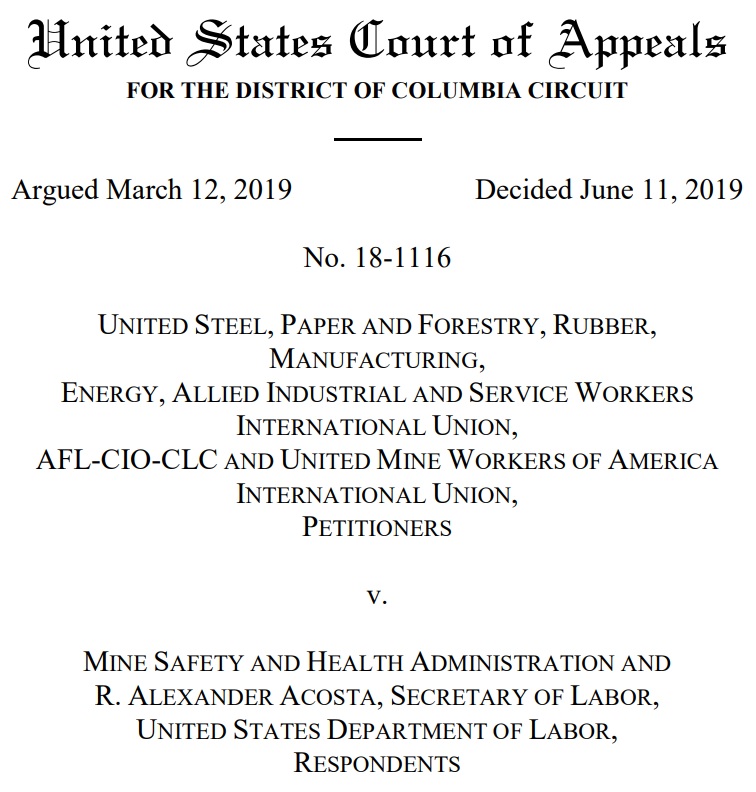Week in Regulation
June 17, 2019
Significant Health Care Proposal Caps Off Otherwise Quiet Week
For most of last week, the pages of the Federal Register carried roughly $50 million in combined total costs – a fairly modest sum in the grand scheme of things. Then, on Friday, a proposed rule out of the Department of Health & Human Services (HHS) hit the books. It single-handedly swung the week’s tally by billions of dollars. Across all proposed and final rules, agencies published $3.5 billion in total net cost savings and added 679,323 hours of paperwork.
REGULATORY TOPLINES
- New Proposed Rules: 36
- New Final Rules: 43
- 2019 Total Pages: 27,848
- 2019 Final Rule Costs: $9.9 Billion
- 2019 Proposed Rule Costs: $1.7 Billion
TRACKING THE REGULATORY BUDGET
The most significant rulemaking of the week was HHS’s proposed rule regarding “Nondiscrimination in Health and Health Education Programs or Activities.” The proposal seeks to significantly amend an Obama-era rulemaking that established the scope of nondiscrimination coverage under section 1557 of the Affordable Care Act. Among the core substantive issues at hand is how the agency interprets discrimination “on the basis of sex.” This debate has already seen significant litigation that will surely continue as this new rule takes shape.
Outside of the social and legal issues, however, HHS estimates that such a shift would have significant implications on the regulatory budget front as well. Scaling back the scope of section 1557 regulations would also have the implicit effect of scaling back the required notices providers would need to send to enrollees. HHS estimates that this could produce nearly $3.6 billion in savings over five years. Although, since this is still a proposed rule, these savings do not yet apply to the fiscal year (FY) 2019 regulatory budget under Executive Order (EO) 13,771.
So far in FY 2019 (which began on October 1, 2018), there have been 50 deregulatory actions (per the rubric created by EO 13,771 and the administration’s subsequent guidance document) against 26 rules that increase costs and fall under the EO’s reach. Combined, these actions yield quantified net costs of roughly $10.8 billion. This total, however, includes the caveat regarding the baseline in the Department of Agriculture’s “National Bioengineered Food Disclosure Standard.” If one considers that rule to be deregulatory, the administration-wide net total is approximately $4.1 billion in net costs. The administration’s cumulative savings goal for FY 2019 is approximately $18 billion.
THIS WEEK’S REGULATORY PICTURE
This week, a deregulatory action from the Mine Safety and Health Administration (MSHA) suffered a significant defeat in federal court.

In April 2018, MSHA issued a final rule that reduced some of the requirements of an Obama-era MSHA rule relating to examinations of the working conditions in mines. The Obama-era rule required, among other things, an examination of each working place in a mine at least once each shift before work begins for conditions that may adversely affect safety or health. It also required that operators record any unsafe conditions found during such an inspection.
The 2018 rule revised these requirements to allow workers to begin their work while the examination was in progress and exempted any unsafe conditions that were immediately addressed from the reporting requirement. This change, according to MSHA’s analysis, would save industry $276 million without reducing worker protection.
This week, the U.S. Court of Appeals for the D.C. Circuit vacated the rule, reinstating the full requirements of the Obama-era rule. The ruling, in which one member on the three-judge panel dissented in part, cited a unique provision in the Federal Mine Safety and Health Act of 1977 that states that no new standard “shall reduce the protection afforded miners by an existing mandatory health or safety standard.”
The two judges concurring in full found that both changes run counter to this “no-less-protection” clause. The judge that dissented in part, however, believed that exempting corrected conditions from the reporting requirement was adequate to protect worker safety while limiting unnecessary paperwork.
Regardless, the decision is a blow to the Trump Administration, which has struggled to get favorable court decisions on several of its deregulatory actions that have been challenged. According to the Institute for Policy Integrity just 3 of 41 deregulatory actions have survived court challenges without any sort of setback. While some of these actions, including this MSHA rule, may ultimately make it through all legal challenges and appeals intact, these setbacks indicate that deregulating is not as simple as striking a regulation from the books.
TOTAL BURDENS
Since January 1, the federal government has published $11.6 billion in net costs (with $9.9 billion in finalized costs) and 31.6 million hours of net paperwork burden increases (with 28.8 million coming from final rules). Click here for the latest Reg Rodeo findings.












